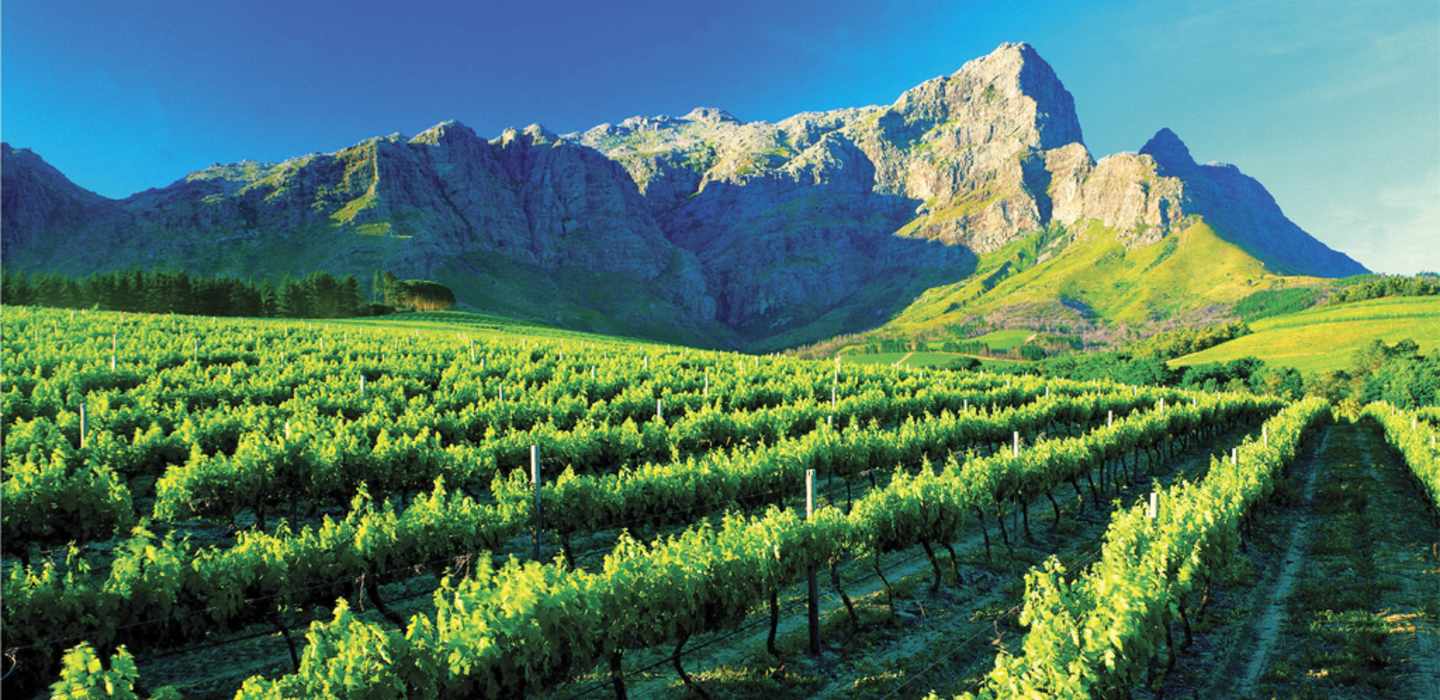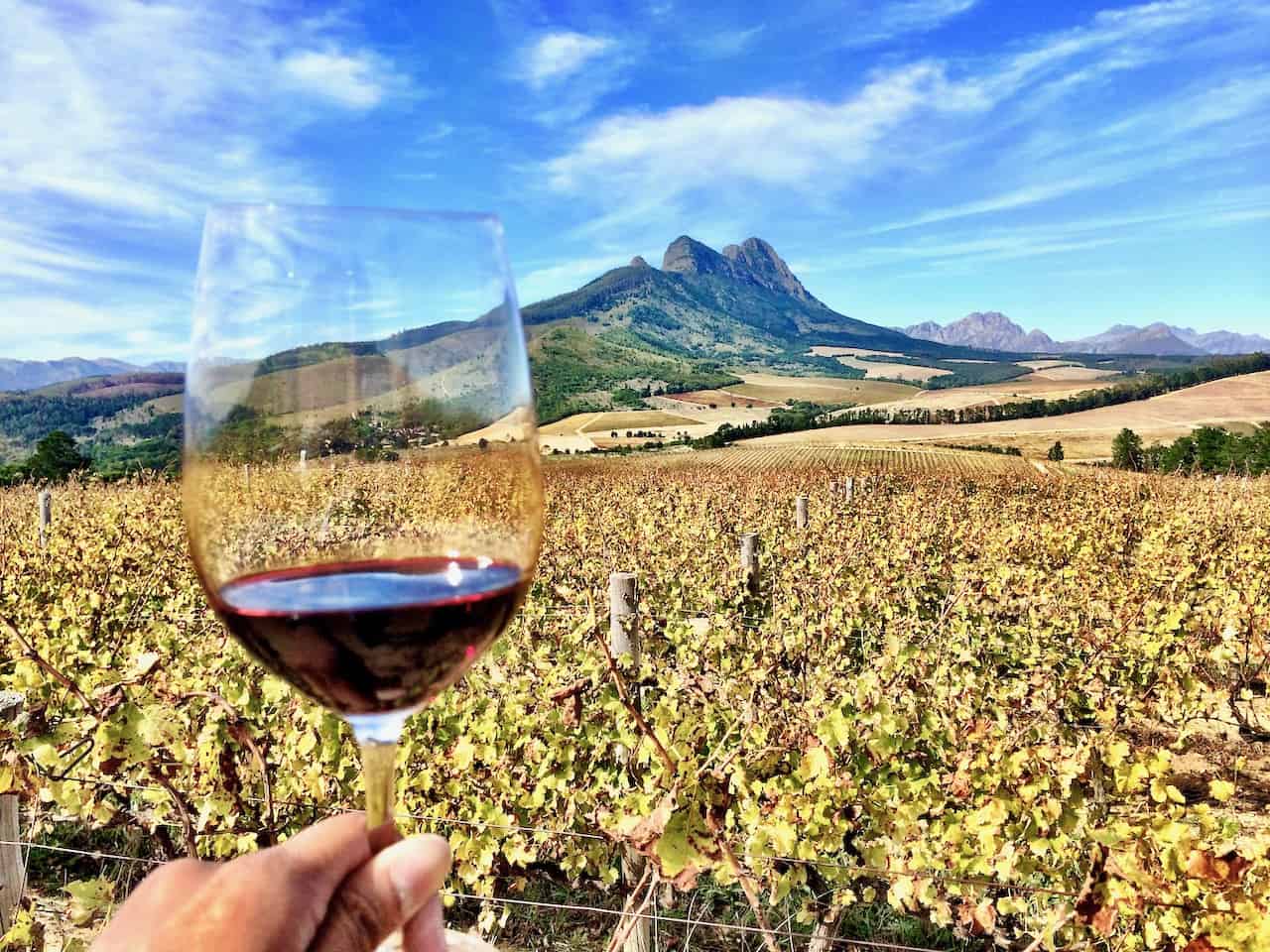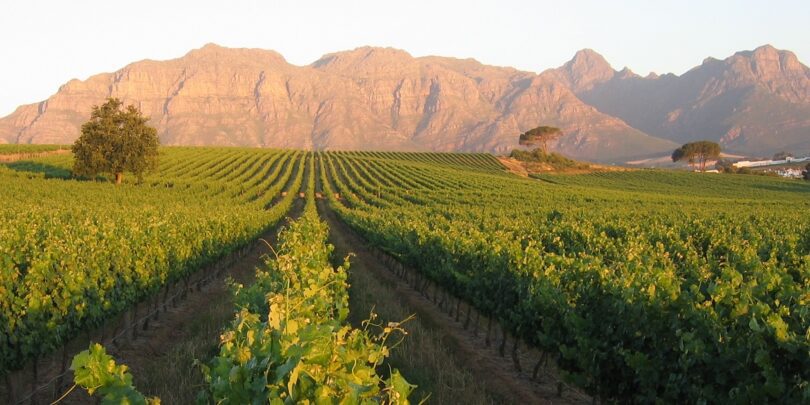The history of wine in South Africa is an inspiring story of centuries of success after years of discouraging results. Many would’ve quit this venture but the Dutch through their trading vehicle Dutch East India Company (VOC) held on. There are 290,000 jobs in the South African wine industry besides ranking among the top 10 wine-producing countries globally. Had VOC given up in the beginning, grapes in Mzansi would be an imported commodity today.
Table of Contents
The History of Wine in South Africa
European colonialists, specifically the Dutch introduced the first batch of grape vines in Cape Town where they settled in 1655. They intended to produce wine for personal consumption and commercial purposes. Wine-making in ancient Europe was a tradition passed on to generations who morphed into African colonizers. Armed with these skills, the Dutch settled in the Cape and set up the Dutch East India Company as a supplier of fresh farm produce to be shipped to The Netherlands.

A vineyard in South Africa. Photo/ZMMI
This engagement led to the conceptualization of preparing vineyards whose grapes would be pressed for wine for the settlers. VOC also targeted sailors on the commercial side of wine production. That’s where the history of wine in South Africa began. Jan van Riebeeck, a senior VOC official led the planting of vineyards within the Cape region in 1659. Vine cutting came from Europe and VOC embarked on viticulture with the expertise of reformed Frenchmen employed by The Dutch to produce fine wine.
However, the first few harvesting seasons didn’t yield much but Riebeeck and his team kept the hope. Their hard work paid off a few years later with a bountiful harvest. Riebeeck sharpened his winegrowing skills so much that he established the Constantia estate in 1685. The success of this estate informed policies and regulations continue which govern this industry to date.
Which are the Main Wine Regions in South Africa?
These six places make up South Africa’s main winegrowing regions in the Western Cape, Cape South Coast and the Coastal regions respectively.
- Stellenbosch
- Franschhoek
- Paarl
- Swartland
- Robertson
- Constantia
Below is a summary of what makes each of the six Wine-producing regions in South Africa unique.
| Stellenbosch
|
· Prestigious red and white wines such as Pinotage, Chenin Blanc, Cabernet Sauvignon, Chenin Blanc
· Has numerous vineyard estates · Most popular of all
|
| Franschhoek | · Popular for its amazing scenery
· Produces prestigious brands such as Chardonnay, Cabernet Sauvignon and Sauvignon Blanc · Hosts the annual Franschhoek Cap Classique and Champagne Festival · Its inhabitants were of French origin who worked at VOC as winemaking specialists
|
| Constantia | · Founded in the 17th century by Jan van Riebeeck
· Remains the oldest wine estate · Has the best wines for dessert such as Vin de Constance · Located near Cape Town |
| Swartland | · Its vineyards are dry-farmed
· It has a reputation as an experimental and innovative winemaking hub · Produces the distinguished Chenin Blancs, Grenache and Shiraz |
| Robertson | · Has extremely fertile limestone soils
· Produces a range of sparkling wines, Sauvignon Blanc and Chardonnay · The region has a calm and cool climate
|
| Paarl | · Exhibit granite soils which give the grapes a unique flavour
· Produces white, red and sparkling wines |
What is the Importance of the Wine Industry in South Africa?

South African Wine. Photo/Velvet Escape
South Africa’s wine industry accounts for $3 billion (R55 billion) of the GDP – with 290,000 jobs across the value chain. Some 100,000 people work in cellars and vineyards. As a dominant wine producer, the history of wine in South Africa holds a steady eighth position in the world. Her wines are categorized as New World because they are stronger than those from Old World countries from Europe. Climate is a major determining factor. New World wines come from warmer places and they have a higher alcoholic content compared to Old World wines from colder places with a lower alcoholic content.

South Africa has been making wine since the 17th century. Photo/ Documentary Tube.
Grapes from South Africa, the USA, New Zealand, and Chile among other places with warmer climates are fruitier and full-bodied than those from colder regions. Their alcohol level is lower. Here are the top 10 biggest producers of wine in the world.
- Italy
- France
- Spain
- USA
- Argentina
- Australia
- Chile
- South Africa
- Germany
- Portugal
What is South Africa’s Most Important Wine of Origin Region?
Stellenbosch has a special place in the history of wine in South Africa as the most famous wine-growing region. The weather here is hot and dry which greatly supports the growth of high-quality berries that produce Pinotage, Shiraz and Cabernet Sauvignon. Sandstone and granite soils covering the hills and valleys host numerous huge estates with vineyards.
Pinotage is an internationally recognized brand whose berries make various high-quality wines in flavour and blend in with other brands such as French-produced Bordeaux. They are full-bodied, tannic yet fruity, great for sparkling wine. Further, Stellenbosch’s hot and dry provide the best growth conditions of Chenin Blanc which is drought resistant.








